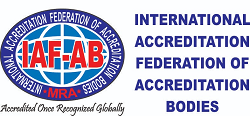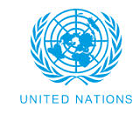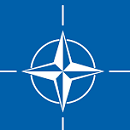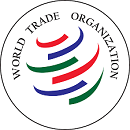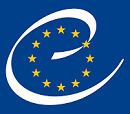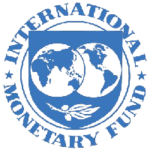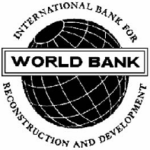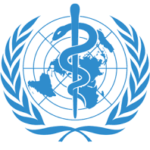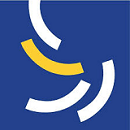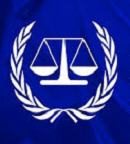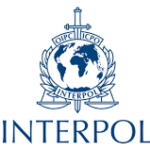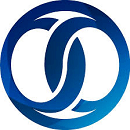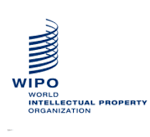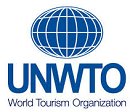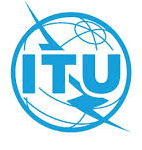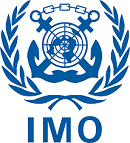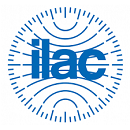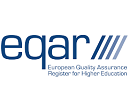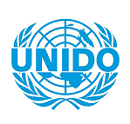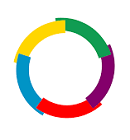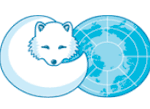- Introduction
- Refrences
- International Association Members
- International Reginal Members
- International Observer Members
- Accreditation Body ISO 17011
- Inspection Body ISO 17020
- Certification Body ISO 17021
- Product Certification Body ISO 17065
- Accredidation Laboratory ISO 17065 / ISO 15185
- Rating Agencies ISO 14064 / ISO 17021
- GHG Verification / Validator
- Previledge Membership
Albania l-BAY-nee-ə; Albanian: Shqipëri or Shqipëria), officially the Republic of Albania (Albanian: Republika e Shqipërisë), is a country in Southeast Europe. It is in the Balkans, on the Adriatic and Ionian Seas within the Mediterranean Sea, and shares land borders with Montenegro to the northwest, Kosovo to the northeast, North Macedonia to the east and Greece to the south. With an area of 28,748 km2 (11,100 sq mi), it has a varied range of climatic, geological, hydrological and morphological conditions. Albania’s landscapes range from rugged snow-capped mountains in the Albanian Alps and the Korab, Skanderbeg, Pindus and Ceraunian Mountains, to fertile lowland plains extending from the Adriatic and Ionian seacoasts. Tirana is the capital and largest city in the country, followed by Durrës, Vlorë, and Shkodër.
In ancient times, the Illyrians inhabited northern and central regions of Albania, whilst Epirotes inhabited the south. Several important ancient Greek colonies were also established on the coast. The Illyrian kingdom centered in what is now Albania was the dominant power before the Rise of Macedon. In the 2nd century BC, the Roman Republic annexed the region, and after the division of the Roman Empire it became part of Byzantium. The first known Albanian autonomous principality, Arbanon, was established in the 12th century. The Kingdom of Albania, Principality of Albania and Albania Veneta were formed between the 13th and 15th centuries in different parts of the country, alongside other Albanian principalities and political entities. In the late 15th century, Albania became part of the Ottoman Empire. In 1912, the modern Albanian state declared independence. In 1939, Italy invaded the Kingdom of Albania, which became Greater Albania, and then a protectorate of Nazi Germany during World War II. After the war, the People’s Socialist Republic of Albania was formed, which lasted until the Revolutions of 1991 concluded with the fall of communism in Albania and eventually the establishment of the current Republic of Albania.
Since its independence in 1912, Albania has undergone a diverse political evolution, transitioning from a monarchy to a communist regime before becoming a sovereign parliamentary constitutional republic. Governed by a constitution prioritizing the separation of powers, the country’s political structure includes a parliament, a ceremonial president, a functional prime minister and a hierarchy of courts. Albania is a developing country with an upper-middle income economy driven by the service sector, with manufacturing and tourism also playing significant roles. After the dissolution of its communist system the country shifted from centralized planning to an open market economy. Albanian citizens have universal health care access and free primary and secondary education.
- 2023 Albanian census 2024, p. 76.
- ^ Jump up to:a b c d 2023 Albanian census 2024, p. 105.
- ^ Jump up to:a b c d “World Economic Outlook Database, October 2023 Edition. (Albania)”. IMF.org. International Monetary Fund. 10 October 2023. Retrieved 11 October 2023.
- ^ “Gini coefficient of equivalised disposable income – EU-SILC survey”. ec.europa.eu. Eurostat. Retrieved 12 August 2021.
- ^ “Human Development Report 2023/24” (PDF). United Nations Development Programme. 13 March 2024. Retrieved 13 March 2024.
- ^ Giacomo Jungg (1 January 1895). Fialuur i voghel scc…p e ltinisct mle…un prei P. Jak Junkut t’ Scocniis … N’Sckoder t’ Scc…pniis. Retrieved 23 July 2016 – via Internet Archive.
- ^ Howe, T. (2017). “Plain tales from the hills: Illyrian influences on Argead military development”. In Müller, S.; Howe, Tim; Bowden, H.; Rollinger, R. (eds.). The History of the Argeads: New Perspectives. Wiesbaden. ISBN 978-3447108515. p. 108.
- ^ Zolo, D. (27 August 2002). Invoking Humanity: War, Law and Global Order. Continuum International Publishing Group. p. 180. ISBN 9780826456564.
- ^ “Albania”. The World Bank. Archived from the original on 21 September 2014. Retrieved 13 September 2014.
- ^ Reports: Poverty Decreases in Albania After Years of Growth. Dow Jones Newswires, 201-938-5500 201-938-5500 201-938-5500.Nasdaq.com
- ^ Madrugearu A, Gordon M. The wars of the Balkan Peninsula. Rowman & Littlefield, 2007. p. 146.
- ^ Richard Talbert, Barrington Atlas of the Greek and Roman World, (ISBN 0-691-03169-X), Map 49 & notes.
- ^ The Illyrians by J. J. Wilkes, 1992, ISBN 978-0-631-19807-9, page 279,”We cannot be certain that the Arbanon of Anna Comnena is the same as Albanopolis of the Albani, a place located on the map of Ptolemy (3.12)”
- ^ Madgearu & Gordon 2008, p. 25. “It is still disputed by scholars that those Albanoi from 1042 were Normans from Sicily, [Southern Italy], or if they are in fact the Albanoi [a large clan of that belongs to the many clans of Albanians] found in Albanian lands during this time frame.”
- ^ Robert Elsei. The Albanian lexicon of Dion Von Kirkman. Earliest reference to the existence of the Albanian language, pp. 113–122.
- ^ “pinocacozza.it”. pinocacozza.it. Archived from the original on 30 December 2019. Retrieved 23 November 2007.
- ^ Jump up to:a b Matasović, Ranko (2019). A Grammatical Sketch of Albanian for Students of Indo European (PDF). Zagreb. p. 39. Archived (PDF) from the original on 9 October 2022.
- ^ Lloshi, Xhevat (1999). “Albanian”. In Hinrichs, Uwe; Büttner, Uwe (eds.). Handbuch der Südosteuropa-Linguistik. Wiesbaden: Otto Harrassowitz Verlag. p. 277. ISBN 9783447039390.
- ^ Kristo Frasheri. History of Albania (A Brief Overview). Tirana, 1964.
- ^ Lloshi, Xhevat. “The Albanian Language” (PDF). United Nations Development Programme. Archived from the original (PDF) on 9 July 2011. Retrieved 9 November 2010.
- ^ F. Prendi, “The Prehistory of Albania”, The Cambridge Ancient History, 2nd edn., vol. 3, part 1: The Prehistory of the Balkans; and the Middle East and the Aegean World, Tenth to Eighth Centuries B.C., ed. John Boardman et al. (Cambridge: Cambridge UP, 1982), 189–90.
- ^ Bunguri, Adem (2014). “Different models for the Neolithisation of Albania”. Documenta Praehistorica. 32.
- ^ Connan, J.; Elezi, G.; Engel, M.H.; Zumberge, A. (2024). “Natural asphalt on Late Neolithic (5000 – 4500 BCE) potsherds from southeastern Albania: A geochemical study”. Journal of Archaeological Science: Reports. 53: 2–3, 11. Bibcode:2024JArSR..53j4343C. doi:10.1016/j.jasrep.2023.104343. eISSN 2352-4103. ISSN 2352-409X.
- ^ Govedarica, Blagoje (2016). “The Stratigraphy of Tumulus 6 in Shtoj and the Appearance of the Violin Idols in Burial Complexes of the South Adriatic Region”. Godišnjak Centra za balkanološka ispitivanja (45): 22–25. ISSN 0350-0020. Retrieved 7 January 2023.
- ^ Lazaridis, Iosif; Alpaslan-Roodenberg, Songül; et al. (26 August 2022). “The genetic history of the Southern Arc: A bridge between West Asia and Europe”. Science. 377 (6609): 29. doi:10.1126/science.abm4247. ISSN 0036-8075. PMC 10064553. PMID 36007055. S2CID 251843620.
: Supplementary Materials
- ^ Gori, Maja; Recchia, Giulia; Tomas, Helen (2018). “The Cetina phenomenon across the Adriatic during the 2nd half of the 3rd millennium BC: new data and research perspectives”. 38°Convegno Nazionale Sulla Preistoria, Protostoria, Storia della Daunia: 201.
- ^ The Illyrians (The Peoples of Europe) by John Wilkes, 1996, ISBN 978-0-631-19807-9, page 92, “Appian’s description of the Illyrian territories records a southern boundary with Chaonia and Thesprotia, where ancient Epirus began south of river Aoous (Vjose)” also map
- ^ Cambridge University Press. The Cambridge ancient history. 2000. ISBN 0-521-23447-6, page 261,”… down to the mouth of Aous”
- ^ Jump up to:a b c Wilkes, John (1995). The Illyrians. Oxford, United Kingdom: Blackwell Publishing. pp. 94, 96, 104. ISBN 0-631-19807-5.
- ^ Boardman, John; Hammond, Nicholas Geoffrey Lemprière (1982). The Cambridge Ancient History: The Expansion of the Greek World, Eighth to Six Centuries B.C. Cambridge, United Kingdom: Cambridge University Press. p. 284. ISBN 0-521-23447-6.
- ^ Lewis, David Malcolm; Boardman, John (1994). The Cambridge Ancient History, Volume 6: The Fourth Century BC. Cambridge, United Kingdom: Cambridge University Press. pp. 430, 434. ISBN 0-521-23348-8.
- ^ Wilson, Nigel Guy (2006). Encyclopedia of Ancient Greece. New York, New York and Oxford, United Kingdom: Routledge (Taylor & Francis). p. 594. ISBN 978-0-415-87396-3.
- ^ Chamoux, François (2003). Hellenistic Civilization. Oxford, United Kingdom: Blackwell Publishing. p. 97. ISBN 0-631-22242-1.
- ^ Justin, Epitome, 17.3
- ^ Hammond, Nicholas Geoffrey Lemprière; Walbank, Frank William (1 January 1972). A History of Macedonia: 336–167 B.C. Clarendon Press. ISBN 978-0-19-814815-9.
- ^ Jackson-Laufer, Guida Myrl (1 January 1999). Women Rulers Throughout the Ages: An Illustrated Guide. ABC-CLIO. pp. 382–383. ISBN 978-1-57607-091-8.
- ^ The History of Rome. D. Appleton & Company. 1 January 1846. p. 259.
- ^ Wilkes, John (9 January 1996). The Illyrians. Wiley. p. 189. ISBN 978-0-631-19807-9.
- ^ Marjeta Šašel Kos, “The Illyrian King Ballaeus – Some Historical Aspects”, Épire, Illyrie, Macédoine: Mélanges offerts au professeur Pierre Cabanes, ed. Danièle Berranger (Clermont-Ferrand: Presses Universitaires Blaise Pascal, 2007), 127.
- ^ Bideleux, Robert; Jeffries, Ian (24 January 2007). Balkans: A Post-Communist History. Routledge. p. 25. ISBN 978-1-134-58328-7.
From AD 548 onward, the lands now known as Albania began to be overrun from the north by ever-increasing …
- ^ Schaefer, Richard T. (2008), Encyclopedia of Race, Ethnicity, and Society, SAGE Publications, ISBN 978-1-4129-2694-2
- ^ Nicol, Donald MacGillivray (1986). Studies in late Byzantine history and prosopography. Variorum Reprints. ISBN 9780860781905.
- ^ Jireček, Konstantin; Thopia (1916). Illyrisch-albanische Forschungen. Duncker & Humblot. p. 239.
Griechen Gregorios Kamonas
- ^ Abulafia, David; McKitterick (21 October 1999). The New Cambridge Medieval History: Volume 5, C.1198-c.1300. Cambridge University Press. p. 786. ISBN 978-0-521-36289-4.
Greco-Albanian lord Gregorios Kamonas
- ^ The Genealogist. 1980. p. 40.
- ^ Clements, John (1992), Clements encyclopedia of world governments, Vol. 10. Political Research, Inc. p. 31: “By 1190, Byzantium’s power had so receded that the archon Progon succeeded in establishing the first Albanian state of the Middle Ages, a principality”
- ^ Pickard, Rob; Çeliku, Florent (2008). Analysis and Reform of Cultural Heritage Policies in South-East Europe. Strasbourg: Council of Europe Publishing. p. 16. ISBN 978-92-871-6265-6.
- ^ Norris, H. T. (1993). Islam in the Balkans: religion and society between Europe and the Arab world. University of South Carolina Press. p. 35. ISBN 978-0-87249-977-5.
- ^ Pipa, Arshi; Repishti, Sami (1984). Studies on Kosova. East European Monographs #155. pp. 7–8. ISBN 978-0-88033-047-3.
- ^ Jump up to:a b Zickel, Raymond; Iwaskiw, Walter R., eds. (1994). “”The Barbarian Invasions and the Middle Ages,” Albania: A Country Study”. Retrieved 9 April 2008.
- ^ Madgearu, Alexandru; Gordon, Martin (2008). The wars of the Balkan Peninsula: Their medieval origins. Lanham: Scarecrow Press. p. 43. ISBN 9780810858466.
Albanoi.
- ^ Etleva, Lala (2008). Regnum Albaniae, the Papal Curia, and the Western Visions of a Borderline Nobility (PDF). Cambridge University Press. Archived (PDF) from the original on 9 October 2022.
- ^ Licursi, Emiddio Pietro (2011). Empire of Nations: The Consolidation of Albanian and Turkish National Identities in the Late Ottoman Empire, 1878–1913 (Thesis). New York: Columbia University. p. 19. hdl:10022/AC:P:10297.
By 1415, after a chaotic interregnum, Sultan Mehmet I sent the military to erect the first Ottoman garrisons throughout southern Albania, establishing direct military authority in the region … l jurisdiction over most of Albania …
- ^ The Balkans: From Constantinople to Communism by D. Hupchick, page 110
- ^ Gjonça, Arjan (2001). Communism, Health and Lifestyle: The Paradox of Mortality Transition in Albania, 1950–1990. Greenwood Publishing Group. p. 7. ISBN 978-0-313-31586-2.
- ^ Norris, H. T. (1993). Islam in the Balkans: religion and society between Europe and the Arab world. University of South Carolina Press. p. 196. ISBN 978-0-87249-977-5.
- ^ Zickel, Raymond; Iwaskiw, Walter R. (1994). “Albania: A Country Study (“Albanians under Ottoman Rule”)”. Retrieved 9 April 2008.
- ^ Rob Pickard (2008). Analysis and Reform of Cultural Heritage Policies in South-East Europe (Europarat ed.). Council of Europe. p. 16. ISBN 978-92-871-6265-6.
- ^ Hodgkinson 2005, p. 240.
- ^ Hodgkinson 2005, p. xii.
- ^ Donald Edgar Pitcher (1968). An Historical Geography of the Ottoman Empire: From Earliest Times to the End of the Sixteenth Century. Brill. p. 88.
- ^ Fine, John V.A. (1994). The late medieval Balkans: a critical survey from the late twelfth century to the Ottoman conquest (2. print ed.). Ann Arbor, MI: University of Michigan Press. p. 598. ISBN 9780472082605.
- ^ Jump up to:a b “Arnawutluḳ.” in Encyclopaedia of Islam, Second Edition. Brill Online, 2012.
- ^ Jump up to:a b c Clayer, Nathalie (2012). “Albania” in Encyclopaedia of Islam, Gudrun Krämer, Denis Matringe, Rokovet, John Nawas, Everett Rowson (eds.). Brill Online.
- ^ Babinger, Franz (1992). Mehmed the Conqueror and His Time. Princeton University Press. p. 51. ISBN 0-691-01078-1.
- ^ Peirce, Leslie P. (1993). The Imperial Harem: Women and Sovereignty in the Ottoman Empire. New York: Oxford University Press, Inc. p. 94. ISBN 0-19-507673-7.
- ^ Observator Cultural. “Dor de Dunăre şi alte nostalgii cosmopolite”. observatorcultural.ro (in Romanian).
- ^ Sarah Amsler (2007). Theorising Social Change in Post-Soviet Countries: Critical Approaches (Balihar Sanghera, Sarah Amsler, Tatiana Yarkova ed.). Peter Lang, 2007. p. 96105. ISBN 9783039103294.
- ^ Kopecek, Michal; Ersoy, Ahmed; Gorni, Maciej; Kechriotis, Vangelis; Manchev, Boyan; Trencsenyi, Balazs; Turda, Marius (2006), Discourses of collective identity in Central and Southeast Europe (1770–1945), vol. 1, Budapest, Hungary: Central European University Press, p. 348, ISBN 978-963-7326-52-3,
The position of the League in the beginning was based on religious solidarity. It was even called Komiteti i Myslimanëve të Vërtetë (The Committee of the Real Muslims) … decisions are taken and supported mostly by landlords and people closely connected with Ottoman administration and religious authorities..
- ^ Kopeček, Michal; Ersoy, Ahmed; Gorni, Maciej; Kechriotis, Vangelis; Manchev, Boyan; Trencsenyi, Balazs; Turda, Marius (2006), “Program of the Albanian League of Prizren”, Discourses of collective identity in Central and Southeast Europe (1770–1945), vol. 1, Budapest, Hungary: Central European University Press, p. 347, ISBN 978-963-7326-52-3, retrieved 18 January 2011,
there were no delegates from Shkodra villayet and a few Bosnian delegates also participated. Present was also mutasarrif (administrator of sandjak) of Prizren as representative of the central authorities
- ^ Elsie, Robert. “1878 The Resolutions of the League of Prizren”. albanianhistory.net. Archived from the original on 8 September 2010. Retrieved 20 February 2011.
On 10 June 1878, … The League of Prizren, Alb. Lidhja e Prizrenit, … On 13 June 1878, the League submitted an eighteen-page memorandum to Benjamin Disraeli, the British representative at the Congress of Berlin
- ^ “Albanian League”. Encyclopædia Britannica. Retrieved 5 January 2012.
- ^ Giaro, Tomasz (2007). “The Albanian legal and constitutional system between the World Wars”. Modernisierung durch Transfer zwischen den Weltkriegen. Frankfurt am Main, Germany: Vittorio Klosterman GmbH. p. 185. ISBN 978-3-465-04017-0. Retrieved 24 January 2011.
From its own members congress elected a senate (Pleqësi), composed of 18 members, which assumed advisory role to the government.
- ^ Qemali, Ismail. “Ismail Kemal bey Vlora: Memoirs”. Archived from the original on 17 June 2010. Retrieved 23 January 2011.
15th–28th November 1912 …
- ^ Qemali, Ismail. “Ismail Kemal bey Vlora: Memoirs”. Archived from the original on 17 June 2010. Retrieved 23 January 2011.
On the resumption of the sitting, I was elected President of the Provisional Government, with a mandate to form a Cabinet …
- ^ Giaro, Tomasz (2007). “The Albanian legal and constitutional system between the World Wars”. Modernisierung durch Transfer zwischen den Weltkriegen. Frankfurt am Main, Germany: Vittorio Klosterman GmbH. p. 185. ISBN 978-3-465-04017-0. Retrieved 24 January 2011.
a provisional government, consisting of ten members and led by Vlora, was formed on 4 December.
- ^ Elsie, Robert. “1913 The Conference of London”. Archived from the original on 17 July 2011. Retrieved 5 January 2012.
- ^ Jelavich, Barbara (1999) [1983], “The end of Ottoman rule in Europe”, History of the Balkans: Twentieth century, vol. 2, Cambridge, United Kingdom: The Press Syndicate of University of Cambridge, p. 101, ISBN 978-0-521-27459-3, retrieved 21 January 2011,
the International Commission … had headquarters in Vlorë
- ^ Zaharia, Perikli (24 March 2003). “The post – 1989 constitutional course of south east Europe”. Athens: Centre for European Constitutional Law. Archived from the original on 16 June 2011. Retrieved 22 January 2011.
- ^ Seton-Watson, R.W.; Wilson, J. Dover; Zimmern, Alfred E.; Greenwood, Arthur (10 January 2004) [1915], “III Germany”, The War and Democracy (1st ed.), London: MacMillan, archived from the original on 13 November 2012,
Prince William of Wied, the first Prince of Albania
- ^ Elsie, Robert. “Albania under prince Wied”. Archived from the original on 17 July 2011. Retrieved 25 January 2011.
pro-Ottoman forces … were opposed to the increasing Western influence … In November 1913, these forces, … had offered the vacant Albanian throne to General Izzet Pasha … War Minister who was of Albanian origin.
- ^ Jelavich, Barbara (1999) [1983], History of the Balkans: Twentieth century, vol. 2, Cambridge, United Kingdom: The Press Syndicate of University of Cambridge, p. 103, ISBN 978-0-521-27459-3, retrieved 25 January 2011,
peasants..willing listeners to Ottoman propaganda … attached the new regime as a tool of the beys and Christian powers
- ^ Bowden, William (2003). Epirus Vetus : the archaeology of a late antique province. London: Duckworth. p. 28. ISBN 978-0-7156-3116-4.
the Greek Epirote population of the area refused to be incorporated into the new Albanian state and in February 1914 declared the Autonomous Republic of Northern Epirus … in 1921 Albania was recognised as an independent sovereign state, with its borders established on their present lines.
- ^ ed, Gregory C. Ference (1994). Chronology of 20th century eastern European history. Detroit [u.a.]: Gale Research. p. 9. ISBN 978-0-8103-8879-6.
February 28 George Zographos, a former foreign minister of Greece, proclaims at Gjirokaster the establishment of the Autonomous Republic of Northern Epirus, with Zographos as president. He notifies the International Commission that his government has been established because the Great Powers have not provided the Greeks in southern Albania any guarantees for the protection of the life, property and religious freedom, and ethnic existence.
- ^ “The Efforts to settle amputated Albania state”. albaniainbrief.com. Archived from the original on 1 June 2011. Retrieved 28 January 2011.
Thousands of muslim peasants, … were exploited by their leaders Haxhi Qamili, Arif Hiqmeti, Musa Qazimi and Mustafa Ndroqi, … to rebel
- ^ Vickers, Miranda (1999). The Albanians: a modern history. I.B. Tauris. p. 81. ISBN 978-1-86064-541-9.
He gathered round him a group of discontented Muslim priests … and proclaimed himself the savior of Albania and the Champion of Islam.
- ^ Elsie, Robert. “Albania under prince Wied”. Archived from the original on 17 July 2011. Retrieved 25 January 2011.
mostly volunteers from Kosova under their leader Isa Boletini
- ^ Elsie, Robert. “Albania under prince Wied”. Archived from the original on 17 July 2011. Retrieved 25 January 2011.
Panic broke out in Durrës, and the royal family sought refuge on an Italian vessel …
- ^ Springer, Elisabeth; Kammerhofer, Leopold (1993). Archiv und Forschung. Oldenbourg Wissenschaftsverlag. p. 346. ISBN 978-3-486-55989-7.
- ^ Jump up to:a b c d e f g h i j k l m Zickel, Raymond; Iwaskiw, Walter R. (eds.). Albania country study (PDF). Federal Research Division, Library of Congress. Archived (PDF) from the original on 11 September 2023. Retrieved 11 September 2023.
- ^ Jump up to:a b Vickers, Miranda (29 November 1999). The Albanians: A Modern History. Bloomsbury Academic. p. 118. ISBN 978-1-86064-541-9. Archived from the original on 13 September 2023. Retrieved 13 September 2023.
- ^ Davies, Norman (2011). Vanished Kingdoms: The History of Half-Forgotten Europe. Penguin Books Limited. p. 17. ISBN 978-0-14-196048-7. Archived from the original on 13 September 2023.
- ^ Pettifer, James; Buchanan, Tom (2015). War in the Balkans: Conflict and Diplomacy before World War I. Bloomsbury Publishing. p. 32. ISBN 978-0-85772-641-4. Archived from the original on 13 September 2023. Retrieved 13 September 2023.
- ^ Gerwarth, Robert (2007). Twisted Paths: Europe 1914-1945. Oxford University Press. pp. 242–261. ISBN 978-0-1992-8185-5. Archived from the original on 13 September 2023. Retrieved 13 September 2023.
- ^ Keegan, John; Churchill, Winston (1986). The Second World War (Six Volume Boxed Set). Boston, United States: Mariner Books. p. 314. ISBN 0-395-41685-X. Archived from the original on 13 September 2023. Retrieved 13 September 2023.
- ^ Zabecki, David T. (1999). World War II in Europe: an encyclopedia. New York: Garland Pub. p. 1353. ISBN 0-8240-7029-1.
- ^ Bogdani, Mirela; Loughlin, John (15 March 2007). Albania and the European Union: The Tumultuous Journey Towards Integration and Accession. I.B. Tauris. p. 230. ISBN 978-1-84511-308-7.
- ^ Morrock, Richard (11 October 2010). The Psychology of Genocide and Violent Oppression: A Study of Mass Cruelty from Nazi Germany to Rwanda. McFarland. p. 55. ISBN 978-0-7864-5628-4.
The nationalist Balli Kombetar, which had fought against Italy, made a deal with the German invaders, and formed a “neutral” government in Tirana which …
- ^ Jump up to:a b c “Albanian Nationalism”. Encyclopædia Britannica. Retrieved 22 November 2016.
- ^ “Envery Hoxha”. Encyclopædia Britannica. Retrieved 22 November 2016.
- ^ Jump up to:a b c “Human Rights in Post-Communist Albania”. Human Rights Watch (HRW). Archived from the original on 11 September 2023. Retrieved 11 September 2023.
- ^ Fischer, Bernd (10 June 2010). “Albania and Enver Hoxha’s legacy”. OpenDemocracy. Archived from the original on 11 September 2023. Retrieved 11 September 2023.
- ^ Pano, Aristotel. “Panorama of the Economic-Social Development of Socialist Albania”. Archived from the original on 31 May 2023. Retrieved 11 April 2012.
- ^ 40 Years of Socialist Albania, Dhimiter Picani
- ^ Qori, Arlind (22 February 2019). “From Faculty to Factory”. Jacobin. Retrieved 14 March 2019.
- ^ “Hapet dosja, ja harta e bunkerëve dhe tuneleve sekretë”. Archived from the original on 17 September 2017. Retrieved 11 August 2016.
- ^ Jump up to:a b Elsie, Robert (2010). Historical Dictionary of Albania. Historical Dictionaries of Europe, No. 75 (2nd ed.). Lanham, MD, and Plymouth: The Scarecrow Press. p. 27. ISBN 978-0-8108-6188-6.
- ^ “Report: The Elections in Albania”. Commission on Security and Cooperation in Europe (CSCE). 4 April 1991. Archived from the original on 1 October 2020. Retrieved 1 October 2020.
- ^ Jarvis, Christopher (2000). “The Rise and Fall of the Albanian Pyramid Schemes”. Finance and Development. 37 (1): 1.
- ^ Bezemer, Dirk (2001). “Post-socialist Financial Fragility: The Case of Albania” (PDF). Cambridge Journal of Economics. 25 (1): 1–25. doi:10.1093/cje/25.1.1. hdl:10419/85494. JSTOR 23599718. Archived (PDF) from the original on 9 October 2022.
- ^ Musaraj, Smoki (2011). “Tales from Albarado: The Materiality of Pyramid Schemes in Post-socialist Albania”. Cultural Anthropology. 26 (1): 84–110. doi:10.1111/j.1548-1360.2010.01081.x.
- ^ For the most part, the Albanian refugees emigrated to Italy, Greece, Switzerland, Germany, or North America.
- ^ National Geophysical Data Center / World Data Service (NGDC/WDS): NCEI/WDS Global Significant Earthquake Database. NOAA National Centers for Environmental Information (1972). “Significant Earthquake Information”. NOAA National Centers for Environmental Information. doi:10.7289/V5TD9V7K.
- ^ Burden, Brandon (December 2016). “Nato’s small states: Albania as a case study” (PDF). Calhoun Naval Postgraduate School (NPS). pp. 44–60. Archived (PDF) from the original on 18 April 2021. Retrieved 16 August 2021.
- ^ “Ceremony marks the accession of Albania and Croatia to NATO”. North Atlantic Treaty Organization (NATO). 7 April 2009. Retrieved 1 December 2019.
- ^ “Albania in NATO”. ambasadat.gov.al. Permanent Delegation of the Republic of Albania to NATO.
- ^ “Albania – Eu-Albania relations”. European Commission (EC). Archived from the original on 26 June 2013. Retrieved 1 December 2019.
- ^ Jump up to:a b “EU candidate status for Albania”. European Commission (EC). 24 June 2014. Archived from the original on 5 May 2023. Retrieved 1 December 2019.
- ^ Shqip, Gazeta. “Ahmetaj: Premtimi për 300 mijë vende punë është mbajtur – Gazeta SHQIP Online”. gazeta-shqip.com.
- ^ “PM Rama at ‘Global Leader Woman’ Summit”. ambasadat.gov.al.
- ^ “Albania: PM Edi Rama secures third term for Socialist Party”. Deutsche Welle (DW). 27 April 2021. Archived from the original on 10 June 2021. Retrieved 16 August 2021.
- ^ Crowcroft, Orlando (27 April 2021). “Edi Rama claims ‘beautiful victory’ in Albanian election”. Euronews. Archived from the original on 30 April 2021. Retrieved 16 August 2021.
- ^ ANSS. “Albania 2019: M 6.4 – 16 km WSW of Mamurras, Albania”. Comprehensive Catalog. U.S. Geological Survey. Retrieved 1 December 2019.
- ^ “Very Strong earthquake – Albania – November 26, 2019”. Earthquake-Report. 26 November 2019. Archived from the original on 28 November 2019. Retrieved 1 December 2019.
- ^ “Albanians Raise $13 Million in 3 Days for Earthquake Relief”. Exit News. 29 November 2019. Archived from the original on 3 August 2020. Retrieved 3 August 2020.
- ^ “Ministria e Shëndetësisë: Konfirmohen dy rastet e para me koronavirusin e ri” (in Albanian). Ministry of Health and Social Protection. 9 March 2020. Archived from the original on 23 July 2020. Retrieved 3 August 2020.
- ^ Ruci, Ani (9 March 2020). “Shqipëria preket nga virusi Corona” (in Albanian). Deutsche Welle (DW). Archived from the original on 3 August 2020. Retrieved 3 August 2020.
- ^ “Masat për koronavirusin, Rama: Nga nesër postblloqe, gjobë 5000 euro kush thyen karantinën” (in Albanian). A2 CNN. 11 March 2020. Archived from the original on 3 August 2020. Retrieved 3 August 2020.
- ^ Gjonaj, Arlinda (9 March 2020). “Rama: Mbyllja e kufijve nuk këshillohet nga OBSH, vetëm kufizime të pjesshme” (in Albanian). Albanian Telegraphic Agency (ATA). Archived from the original on 3 August 2020. Retrieved 3 August 2020.
- ^ Cuka, Fatjon (1 June 2020). “COVID-19, në Shqipëri vazhdon lehtësimi i masave” (in Albanian). Anadolu Agency (AA). Archived from the original on 3 August 2020. Retrieved 3 August 2020.
- ^ “Fushata e vaksinimit ‘Shqipëria buzëqesh'” (in Albanian). Ministry of Health and Social Protection. Archived from the original on 16 August 2021. Retrieved 16 August 2021.
- ^ “Vaksinimi antiCOVID/ Kryhen 1,280,239 vaksinime” (in Albanian). Ministry of Health and Social Protection. 11 August 2021. Archived from the original on 14 August 2021. Retrieved 16 August 2021.
- ^ Higgens, Andrew (21 September 2024). “Albania Is Planning a New Muslim State Inside Its Capital”. The New York Times. Archived from the original on 21 September 2024. Retrieved 21 September 2024.
- ^ Eftimi, R. “Some Considerations on Seawater-freshwater Relationship in Albanian Coastal Area” (PDF). Tirana. Archived from the original (PDF) on 25 July 2020. Retrieved 30 July 2020.
- ^ “Tregues Sipas Qarqeve Indicators by Prefectures” (PDF). Instituti i Statistikës (INSTAT). Archived from the original (PDF) on 24 July 2011. Retrieved 30 July 2020.
- ^ Bolevich, Maria (3 January 2017). “Largest lake in southern Europe under threat from “eco-resort””. New Scientist.
- ^ “Natural and Cultural Heritage of the Ohrid region”. UNESCO. pp. UNESCO.
Situated on the shores of Lake Ohrid, the town of Ohrid is one of the oldest human settlements in Europe; Lake Ohrid is a superlative natural phenomenon, providing refuge for numerous endemic and relict freshwater species of flora and fauna dating from the tertiary period. As a deep and ancient lake of tectonic origin, Lake Ohrid has existed continuously for approximately two to three million years.
- ^ Terms and Definitions FRA 2025 Forest Resources Assessment, Working Paper 194. Food and Agriculture Organization of the United Nations. 2023.
- ^ “Global Forest Resources Assessment 2020, Albania”. Food Agriculture Organization of the United Nations.
- ^ “Environmental Performance Reviews Albania” (PDF). United Nations Economic Commission for Europe (UNECE). p. 30. Archived (PDF) from the original on 8 July 2023. Retrieved 8 July 2023.
- ^ Jump up to:a b “The First National Communication of the Republic of Albania to the United Nations Framework Convention on Climate Change (UNFCCC)” (PDF). Tirana: Ministry of Environment of Albania. pp. 33 – , 34. Archived (PDF) from the original on 9 October 2022. Retrieved 8 July 2023.
- ^ Jump up to:a b Ministry of Environment of Albania. “Albania’s Second National Communication to the Conference of Parties under the United Nations Framework Convention on Climate Change” (PDF). unfccc.int. Tirana. p. 28. Archived (PDF) from the original on 9 October 2022.
- ^ “Albania: Climate Change Overview”. World Bank Group. Archived from the original on 8 July 2023. Retrieved 8 July 2023.
- ^ Jump up to:a b c d Alban Kuriqi. “Climate and climate change data for Albania” (PDF). drinkadria.fgg.uni-lj.si. Tirana. pp. 3–5. Archived from the original (PDF) on 1 December 2017. Retrieved 26 November 2017.
- ^ “PERGATITJA E PROFILIT KOMBETAR SHQIPETAR PER TE VLERESUAR STRUKTUREN KOMBETARE NE MENAXHIMIN E KIMIKATEVE DHE ZBATIMIN E UDHEZIMEVE TE SAICM” (PDF). Archived from the original (PDF) on 11 April 2019. Retrieved 4 March 2018.
- ^ “Moti, regjistrohet temperatura rekord në Shqipëri, – 29 gradë në Librazhd”. Archived from the original on 4 March 2018. Retrieved 4 March 2018.
- ^ Hughes, Philip D. (30 November 2009). “Twenty-first Century Glaciers and Climate in the Prokletije Mountains, Albania”. Arctic, Antarctic, and Alpine Research. 41 (4): 455–459. Bibcode:2009AAAR…41..455H. doi:10.1657/1938-4246-41.4.455.
- ^ “Mediterranean Basin Biodiversity Hotspot” (PDF). BirdLife International. July 2017. Archived from the original (PDF) on 30 July 2020. Retrieved 30 July 2020.
- ^ “Biodiversity in Albania” (PDF). National Agency of Protected Areas. Archived from the original (PDF) on 30 July 2020. Retrieved 30 July 2020.
- ^ “Fifth National Report of Albania to the United Nations Convention on Biological Diversity (CBD)” (PDF). Ministry of Tourism and Environment. p. 4. Archived (PDF) from the original on 9 October 2022. Retrieved 30 July 2020.
- ^ UNECE. “Albania Environmental Performance Reviews” (PDF). unece.org. p. 141.
- ^ “On the status and distribution of the large carnivores (Mammalia: Carnivora) in Albania” (PDF). Tirana. p. 4. Archived (PDF) from the original on 9 October 2022. Retrieved 30 July 2020.
- ^ “Die potentielle Verbreitung der Wildkatze (Felis silvestris silvestris) in Österreich als Entscheidungsgrundlage für weitere Schutzmaßnahmen” (PDF). wildkatze-in-oesterreich.at (in German). Salzburg. p. 19. Archived from the original (PDF) on 9 September 2018. Retrieved 14 October 2018.
- ^ Protection and Preservation of Natural Environment in Albania. “Albanian Nature”. ppnea.org. Archived from the original on 31 August 2018. Retrieved 4 January 2019.
- ^ NaturAL. “Albania towards NATURA 2000”. natura.al. Tirana. p. 1. Archived from the original on 11 March 2017. Retrieved 26 November 2017.
- ^ “The National Parks of Albania The fifteen national parks in Albania encompass an area of 210,668.48 hectares which accounts for about 3.65% of the overall territory of the country”. worldatlas.com. 11 September 2019.
The territory of Albania can be divided into four ecoregions: Dinaric Alpine (mixed forests in the far north). Balcanic (mixed forest in the north-east). Pindus mountain (mixed forests covering the central and southeast mountains). Illyrian deciduous (forest covering the rest of the country).
- ^ Ministry of Environment. “Gap Analysis for Nature Protection Legal Acts on Wild Fauna Conservation and Hunting (Albania)” (PDF). al.undp.org. pp. 86–99. Archived from the original (PDF) on 14 October 2018. Retrieved 4 January 2019.
- ^ Jump up to:a b “Country Profiles: Albania – Main Details”. Convention on Biological Diversity (CBD). Archived from the original on 4 September 2023. Retrieved 4 September 2023.
- ^ Jump up to:a b “Për miratimin e ndryshimit të statusit dhe të sipërfaqes së ekosistemeve natyrore park kombëtar (kategoria ii) të zonave të mbrojtura mjedisore”. Qendra e Botimeve Zyrtare. 26 January 2022. Retrieved 2 September 2023.
- ^ “Annotated List of Wetlands of International Importance: Albania” (PDF). Ramsar Convention. Archived (PDF) from the original on 4 September 2023. Retrieved 4 September 2023.
- ^ “Ohrid-Prespa Transboundary Biosphere Reserve, Albania/North Macedonia”. United Nations Educational, Scientific and Cultural Organization (UNESCO). Archived from the original on 4 September 2023. Retrieved 4 September 2023.
- ^ “Prespa-Ohrid region: Ancient lakes and undiscovered mountain ranges”. Euronatur. Archived from the original on 20 September 2021. Retrieved 20 September 2021.
- ^ “Ancient and Primeval Beech Forests of the Carpathians and Other Regions of Europe”. United Nations Educational, Scientific, and Cultural Organisation (UNESCO). Archived from the original on 12 September 2021. Retrieved 20 September 2021.
- ^ Shumka, Spase. “Albania’s Biodiversity and Protected Areas An Executive Summary” (PDF). United Nations Development Programme (UNDP). Archived from the original (PDF) on 26 July 2020. Retrieved 26 October 2020.
- ^ “Albania Environment and Climate Change Policy Brief” (PDF). Sida’s Helpdesk for Environment and Climate Change (SLU). p. 2. Archived (PDF) from the original on 5 September 2021. Retrieved 5 September 2021.
- ^ “Albania: Environment and Climate Change”. United Nations Development Programme Albania (UNDP). Archived from the original on 22 September 2020. Retrieved 5 September 2021.
- ^ “Climate Risk Country Profile Albania” (PDF). World Bank. p. 12. Archived (PDF) from the original on 6 September 2021. Retrieved 6 September 2021.
- ^ “ND-GAIN Country Index”. Notre Dame Global Adaptation Index (ND-GAIN). Archived from the original on 10 June 2023. Retrieved 10 June 2023.
- ^ “Third National Communication of the Republic of Albania under the United Nations Framework Convention on Climate Change” (PDF). Ministry of Environment. p. 143. Archived (PDF) from the original on 7 July 2021. Retrieved 6 September 2021.
- ^ Shehu, Elfrida; Skrame, Klodian (3 March 2021). “Integrated methodologies for seismic risk mitigation in Durrës (Albania) after the seismic event of November 26th, 2019”. Egu General Assembly Conference Abstracts. Bibcode:2021EGUGA..2314861S. doi:10.5194/egusphere-egu21-14861. S2CID 237983340. Archived from the original on 6 September 2021. Retrieved 6 September 2021.
- ^ “Albanian National Statement ECOSOC Humanitarian Affairs Segment” (PDF). Ministry for Europe and Foreign Affairs. 23 June 2021. Archived (PDF) from the original on 25 July 2021. Retrieved 5 September 2021.
- ^ “2022 Environmental Performance Index Results”. Environmental Performance Index (EPI). 3 June 2020. Archived from the original on 10 June 2023. Retrieved 10 June 2023.
- ^ “2012 Environmental Performance Index and Pilot Trend Environmental Performance Index” (PDF). Columbia University, Yale University. p. 10. Archived (PDF) from the original on 28 May 2020. Retrieved 5 September 2021.
- ^ Grantham, H. S.; Duncan, A.; Evans, T. D.; Jones, K. R.; Beyer, H. L.; Schuster, R.; Walston, J.; Ray, J. C.; Robinson, J. G.; Callow, M.; Clements, T.; Costa, H. M.; Degemmis, A.; Elsen, P. R.; Ervin, J.; Franco, P.; Goldman, E.; Goetz, S.; Hansen, A.; Hofsvang, E.; Jantz, P.; Jupiter, S.; Kang, A.; Langhammer, P.; Laurance, W. F.; Lieberman, S.; Linkie, M.; Malhi, Y.; Maxwell, S.; et al. (2020). “Anthropogenic modification of forests means only 40% of remaining forests have high ecosystem integrity – Supplementary Material”. Nature Communications. 11 (1): 5978. Bibcode:2020NatCo..11.5978G. doi:10.1038/s41467-020-19493-3. ISSN 2041-1723. PMC 7723057. PMID 33293507.
- ^ “Legal and Institutional Reform in albania after the Democratic Revolution (1991 – 1997)” (PDF). North Atlantic Treaty Organization (NATO). Archived (PDF) from the original on 10 September 2023. Retrieved 10 September 2023.
- ^ Jump up to:a b c “Constitution of the Republic of Albania”. Organization for Security and Co-operation in Europe (OSCE). Archived from the original on 10 September 2023. Retrieved 10 September 2023.
- ^ “Constitution of Albania”. Food and Agriculture Organization (FAO). Archived from the original on 10 September 2023. Retrieved 10 September 2023.
- ^ Jump up to:a b “Albania: Freedom in the World 2023”. Freedom House. Archived from the original on 10 September 2023. Retrieved 10 September 2023.
- ^ Jump up to:a b “2022 Country Reports on Human Rights Practices: Albania”. United States Department of State. Archived from the original on 10 September 2023. Retrieved 10 September 2023.
- ^ “Arbëreshët kërkojnë ndihmë nga Tirana (Video)” (in Albanian). Telegrafi. 4 April 2017. Retrieved 4 April 2017.
- ^ Aydın, Abdurrahim F.; Progonati, Erjada (May 2011). “Albanian foreign policy in the post-communist era”. Unisci Discussion Papers. 26. doi:10.5209/REV_UNIS.2011.V26.37824. S2CID 154016018.
- ^ “Albania in the region”. Ministry for Europe and Foreign Affairs. Archived from the original on 3 June 2023. Retrieved 3 September 2023.
- ^ “Meeting Global Challenges Through Partnership Albania For UN Security Council 2022 – 2023” (PDF). Ministry for Europe and Foreign Affairs. Archived (PDF) from the original on 4 September 2023. Retrieved 4 September 2023.
- ^ “Nato member countries”. North Atlantic Treaty Organization (NATO). 8 June 2023. Archived from the original on 3 September 2023. Retrieved 3 September 2023.
- ^ “Ceremony marks the accession of Albania and Croatia to Nato”. North Atlantic Treaty Organization (NATO). 7 April 2009. Archived from the original on 3 September 2023. Retrieved 3 September 2023.
- ^ Jump up to:a b c “Relations with Regional Countries”. Ministry for Europe and Foreign Affairs. Archived from the original on 4 September 2023. Retrieved 4 September 2023.
- ^ Dhimolea, Antonela. “Comprehensive cooperation between Albania and Kosovo as an auxiliary instrument to a speedy regional economic integration” (PDF). Friedrich Ebert Foundation. Archived (PDF) from the original on 4 September 2023. Retrieved 4 September 2023.
- ^ Jump up to:a b “Article 169, Section 1”. Constitution of Albania. 28 November 1998. Retrieved 6 July 2016.
- ^ “Albania to end conscription by 2010”. wri-irg.org. 22 August 2008.
- ^ “Albania Military 2017”. theodora.com.
- ^ Ministry of Defence. “Engagement Policy and evidence of AAF participation in PK missions”. mod.gov.al.
- ^ sues/active_endeavour/index.html Operation Active Endeavour. nato.int Archived 30 August 2011 at the Wayback Machine
- ^ “Albania membership Nato”. NATO. Archived from the original on 28 July 2011.
- ^ “Albania sells off its military hardware”. BBC News. 17 April 2002.
- ^ “Albania to abolish conscription by 2010”. Southeast European Times. 21 August 2008. Retrieved 29 December 2009.
- ^ “Albanian military expenditure as % of GDP”. World Bank.
- ^ “Reforma Administrativo-territoriale” (PDF) (in Albanian). Government of Albania. p. 8. Archived (PDF) from the original on 9 October 2022.
- ^ “A Brief History of the Administrative-territorial Organisation in Albania”. reformaterritoriale.al. Archived from the original on 9 June 2017. Retrieved 27 September 2017.
- ^ “A Brief History of the Administrative-territorial Organization in Albania”. Archived from the original on 24 May 2015.
- ^ “STRATEGJIA NDËRSEKTORIALE PËR DECENTRALIZIMIN DHE QEVERISJEN VENDORE 2015–2020” (PDF) (in Albanian). Fletorja Zyrtare e Republikës së Shqipërisë. p. 9. Archived from the original (PDF) on 30 June 2017. Retrieved 23 November 2017.
- ^ “On the Organization and Functioning of the Local Government, Republic of Albania, 2000” (PDF). Archived from the original (PDF) on 15 February 2010. Retrieved 27 August 2010.
- ^ “Ndarja e re, mbeten 28 bashki, shkrihen komunat | Shekulli Online”. Shekulli.com.al. 10 January 2014. Archived from the original on 13 January 2014. Retrieved 15 February 2014.
- ^ “Reforma Territoriale – KRYESORE”. Reformaterritoriale.al. Archived from the original on 14 May 2017. Retrieved 15 August 2014.
- ^ “Ndarja administrative, njësitë vendore në lagje dhe fshatra”. Archived from the original on 25 September 2017. Retrieved 7 December 2018.
- ^ “Ndarja e re, mbeten 28 bashki, shkrihen komunat – Shekulli Online”. Shekulli.com.al. Archived from the original on 13 January 2014. Retrieved 23 July 2016.
- ^ “Popullsia në 1 Janar sipas qarqeve dhe gjinisë 2001 – 2020” (in Albanian). Instituti i Statistikës (INSTAT). Archived from the original on 10 October 2021. Retrieved 22 July 2020.
- ^ “Sub-national HDI – Area Database–Global Data Lab”. Retrieved 13 September 2018.
- ^ “Albania”. World Diplomacy. Archived from the original on 8 August 2014. Retrieved 1 August 2014.
- ^ “GDP per capita in purchasing power standards in 2012” (PDF). Eurostat. Archived from the original (PDF) on 27 December 2013. Retrieved 14 December 2013.
- ^ Business: Albania, Cyprus register economic growth SEtimes.com
- ^ Strong economic growth potential puts Albania and Panama top of long term investment list, Propertywire.com Archived 14 April 2009 at the Wayback Machine
- ^ International Monetary Fund (IMF), 9 October 2010. Albania and the IMF
- ^ “Instituti i Statistikave” (PDF). Instituti i Statistikave – Tiranë. Archived from the original (PDF) on 20 December 2016. Retrieved 6 May 2016.
- ^ “Albanian employment rate increases in agriculture, services sector in Q1 2016”. fdi.gov.cn. Archived from the original on 22 September 2017. Retrieved 15 June 2016.
- ^ “UC Research Reveals One of the Earliest Farming Sites in Europe”. University of Cincinnati. 16 April 2012. Archived from the original on 10 September 2015. Retrieved 17 June 2016.
- ^ “IPA National Programme 2011 for Albania Project Fiche 7: Support to Agriculture and Rural Development” (PDF). European Commission. Archived (PDF) from the original on 9 October 2022.
- ^ Dhimitër Doka. “Albaniens vergessener Exportschlager”. humboldt-foundation.de (in German). Archived from the original on 1 December 2017. Retrieved 10 May 2016.
- ^ winealbania.com Archived 8 February 2011 at the Wayback Machine Wine Albania Portal
- ^ Tom Stevenson (2011). The Sotheby’s Wine Encyclopedia. Dorling Kindersley. ISBN 978-1-4053-5979-5.
- ^ “Wine production (tons)”. Food and Agriculture Organization. p. 28. Archived from the original on 20 May 2011. Retrieved 18 April 2011.
- ^ “Manufacturing & garment industry”. 1 June 2014.
- ^ “Mining sector”. 1 June 2014.
- ^ “ANTEA, the company with the highest working standards”. anteacement.com. Archived from the original on 18 April 2017. Retrieved 17 April 2017.
- ^ “UPDATE 1-Bankers Petroleum’s key Albanian oilfield output jumps in Q1”. Reuters. 7 April 2011. Archived from the original on 24 September 2015. Retrieved 30 June 2017.
- ^ “Textile industry in Albania is unprepared for a potential influx of import orders”. balkaneu.com. 24 August 2014.
- ^ Page, Kogan Kogan (2003). Europe Review 2003/04: The Economic and Business Report. Kogan Page Publishers. pp. 3–7. ISBN 9780749440671.
- ^ “Albania – Mining and Minerals”. 15 August 2016. Archived from the original on 18 April 2017. Retrieved 17 April 2017.
- ^ Jump up to:a b c Oltiana Muharremi, Filloreta Madani, Erald Pelari. “The Development of the Service Sector in Albania and Its Future”. researchgate.net. pp. 2–9.
- ^ “Analysis of the Albanian Banking System in the Transition Years” (PDF). ijbcnet.com. Archived (PDF) from the original on 9 October 2022.
- ^ “TOURISM AND EMPLOYMENT IN ALBANIA – IS THERE A STRONG CORRELATION?” (PDF). asecu.gr. pp. 1–9. Archived (PDF) from the original on 9 October 2022.
- ^ Eglantina Hysa – Epoka University. “INFLUENCE OF TOURISM SECTOR IN ALBANIAN GDP: ESTIMATION USING MULTIPLE REGRESSION METHOD”. researchgate.net. Tirana. pp. 1–6.
- ^ World Travel & Tourism Council. “Travel & Tourism: Economic Impact 2017: Albania” (PDF). wttc.org. London. p. 12. Archived (PDF) from the original on 9 October 2022.[dead link]
- ^ “Arrivals of foreign citizens by Lëvizjet e shtetasve shqiptarë dhe të huaj and Month”. databaza.instat.gov.al.[dead link]
- ^ “Number of tourists to Albania up 25 pct during summer 2015”. Travel Gazette. 4 October 2015. Archived from the original on 11 March 2021. Retrieved 9 February 2017.
- ^ “Lonely Planet’s top 10 countries for 2011 – travel tips and articles – Lonely Planet”. Retrieved 7 August 2013.[permanent dead link]
- ^ “52 Places to Go in 2014”. The New York Times. 5 September 2014.[dead link]
- ^ Sustainable Development of Sea-Corridors and Coastal Waters: The TEN ECOPORT project in South East Europe (Chrysostomos Stylios, Tania Floqi, Jordan Marinski, Leonardo Damiani ed.). Springer. 7 April 2015. p. 85. ISBN 9783319113852.
- ^ “Coastline | The Official website of Albanian Tourism”. Albania.al. Archived from the original on 9 August 2014. Retrieved 15 August 2014.
- ^ “Statistikat e transportit” (PDF) (in Albanian). Instituti i Statistikës (INSTAT). 27 January 2019. p. 2. Archived (PDF) from the original on 9 October 2022. Retrieved 8 July 2020.
- ^ Tirana Times (17 January 2018). “Turkish consortium bids to build Vlora airport as Albania prepares to launch national carrier”. tiranatimes.com.
- ^ Jump up to:a b South East Europe Transport Observatory (SEETO). “THE CORE TRANSPORT NETWORK South-East Europe Transport Observatory SEETO” (PDF). European Commission. p. 2. Archived (PDF) from the original on 9 October 2022.
- ^ “Serbia and Kosovo Only Beginning to Form Infrastructural Links: Peace Highway to Connect the Region”. kossev.info. 15 April 2018.
- ^ Rabeta, Lorenc. “Trenat e rinj Tiranë-Durrës-Rinas me 222 pasagjerë, 112 të ulur”. dailynews.al. Archived from the original on 13 January 2017. Retrieved 12 January 2017.
- ^ “Hekurudha Tiranë-Rinas-Durrës, Haxhinasto: Projekti përfundon në 2019”. top-channel.tv (in Albanian). 25 June 2016. Archived from the original on 28 September 2017. Retrieved 4 January 2019.
- ^ Jump up to:a b c “Language Education Policy Profile: Albania Country Report”. Tirana. October 2016.
- ^ Jump up to:a b c “The Albanian education system described and compared with the Dutch system” (PDF). 1 January 2015. Archived from the original (PDF) on 14 October 2017.
- ^ Jump up to:a b “Language Education Policy Profile 2015 – 2017 ALBANIA”. rm.coe.int. Tirana. pp. 13–18.
- ^ “SCHOOL LIFE EXPECTANCY”. world.bymap.org. 31 January 2017.
- ^ “Albania”. The World Factbook (2024 ed.). Central Intelligence Agency. Retrieved 21 June 2013. (Archived 2013 edition.)
- ^ “Overview of the Higher Education System Albania” (PDF). European Commission. February 2017. pp. 12–16. Archived from the original (PDF) on 30 September 2018. Retrieved 30 October 2018.
- ^ “Health Care Systems in Transition Albania 2002” (PDF). World Health Organization. p. 17. Archived (PDF) from the original on 9 October 2022.
- ^ “1998 CONSTITUTION OF THE REPUBLIC OF ALBANIA”. osce.org. p. 10.
- ^ Jump up to:a b c d “Albania Demographic and Health Survey 2008–09” (PDF). dhsprogram.com. March 2010. p. 37. Archived (PDF) from the original on 9 October 2022.
- ^ “Albania-prel.pmd” (PDF). Archived (PDF) from the original on 27 December 2009. Retrieved 29 December 2009.
- ^ “Life Expectancy at Birth”. CIA – The World Factbook. Archived from the original on 13 July 2014. Retrieved 10 October 2009.
- ^ WHO. “Healthy life expectancy at birth, 2000–2015”. World Health Organization. Archived from the original on 13 October 2019. Retrieved 9 December 2017.
- ^ World Health Organization. “Measuring overall health system performance for 191 countries” (PDF). New York University. Archived (PDF) from the original on 9 October 2022.
- ^ “Nutrition, Physical Activity and Obesity Albania” (PDF). World Health Organization. p. 3. Archived (PDF) from the original on 9 October 2022.
- ^ “The World Is Getting Fatter and No One Knows How to Stop It”. Bloomberg.com. Bloomberg L.P. 6 April 2016.
- ^ “Living Smart, the Mediterranean Way of Being Albanian”. agroweb.org. 1 May 2017. Archived from the original on 17 September 2017. Retrieved 24 June 2017.
- ^ “Prevalence of obesity, ages 18+, 2010–2014”. WHO. World Health Organization. Archived from the original on 20 November 2019. Retrieved 26 February 2016.
- ^ “Albania’s Technology Needs Assessment (Final Draft)” (PDF). Ministry of Environment. March 2004. Archived (PDF) from the original on 9 December 2017. Retrieved 29 August 2020.
- ^ Zavalani, Orion. “Renewable energy potentials of Albania”. European Commission (EC). Archived from the original on 29 August 2020. Retrieved 29 August 2020.
- ^ “Fostering Effective Energy Transition 2023 Edition” (PDF). World Economic Forum. p. 12. Archived (PDF) from the original on 8 July 2023. Retrieved 8 July 2023.
- ^ “Albania Renewable Energy Progress Reports 2014–2015” (PDF). Ministry of Infrastructure and Energy (Albania). p. 2. Archived (PDF) from the original on 9 October 2022.
- ^ “Electricity production from hydroelectric sources (% of total)”. World Bank. Retrieved 29 August 2020.
- ^ “Electricity – from hydroelectric plants”. The World Factbook. Archived from the original on 17 August 2020. Retrieved 29 August 2020.
- ^ “Profile: Albania”. International Hydropower Association (IHA). Archived from the original on 29 August 2020. Retrieved 29 August 2020.
- ^ Energy Information Administration (3 September 2016). “Crude Oil Proved Reserves 2016”. eia.gov. p. 1.
- ^ Lorenc Gordani (21 June 2017). “Albania, from the largest continental onshore oil reserves in Europe, to the new bridge between the Balkans and Italy, by Dr Lorenc Gordani”. esc.albaniaenergy.org. p. 1.[permanent dead link]
- ^ “Scoping Report for the ESIA (Environmental and Social Impact Assessment) Albania” (PDF). Trans Adriatic Pipeline (TAP). April 2011. Archived (PDF) from the original on 25 July 2020. Retrieved 29 August 2020.
- ^ “06/11347 – Albania – Benefits of Compliance with environmental acquis – final report” (PDF). European Commission (EC). October 2007. Archived (PDF) from the original on 29 August 2020. Retrieved 29 August 2020.
- ^ “Water statistics”. European Statistical Office (Eurostat). Archived from the original on 29 August 2020. Retrieved 29 August 2020.
- ^ “Progress on Sanitation and Drinking Water : 2015 Update and MDG Assessment” (PDF). United Nations Children’s Fund (UNICEF) and World Health Organization (WHO). Archived from the original (PDF) on 4 March 2016. Retrieved 29 August 2020.
- ^ “1998 Constitution of the Republic of Albania” (PDF). Organization for Security and Co-operation in Europe (OSCE). Archived from the original (PDF) on 30 July 2020. Retrieved 3 October 2020.
- ^ “2020 World Press Freedom Index”. Reporters Without Borders. 30 January 2013. Archived from the original on 3 October 2020. Retrieved 3 October 2020.
- ^ “Freedom House–Countries and Territories”. Freedom House. Archived from the original on 3 October 2020. Retrieved 3 October 2020.
- ^ “Media Outlets in Albania”. Konrad Adenauer Foundation (KAS). Archived from the original on 3 October 2020. Retrieved 3 October 2020.
- ^ Jump up to:a b c “An Overview of Albanian Film History”. The Albanian Cinema Project. Archived from the original on 3 October 2020. Retrieved 3 October 2020.
- ^ “Research for Development”. DFID. Retrieved 13 September 2014.
- ^ “Strategy of Science, Technology and Innovation 2009–2015” (PDF). Archived from the original (PDF) on 3 April 2011. Retrieved 27 August 2010.
- ^ WIPO (2022). Global Innovation Index 2023, 15th Edition. World Intellectual Property Organization. doi:10.34667/tind.46596. ISBN 978-92-805-3432-0. Retrieved 29 October 2023 – via www.wipo.int.
- ^ “Global Innovation Index”. INSEAD Knowledge. 28 October 2013. Archived from the original on 2 September 2021. Retrieved 2 September 2021.
- ^ Jump up to:a b “Plani Kombëtar për Zhvillimin e Qëndrueshëm të Infrastrukturës Digjitale Broadband 2020–2025” (PDF) (in Albanian). Ministry of Infrastructure and Energy. p. 8. Archived from the original (PDF) on 30 August 2020. Retrieved 30 August 2020.
- ^ Muharremi, Oltiana; Madani, Filloreta; Pelari, Erald (October 2013). “The Development of the Service Sector in Albania and Its Future”. Retrieved 30 August 2020.
- ^ Jump up to:a b “2019 Raporti Vjetor” (PDF) (in Albanian). Electronic and Postal Communications Authority (AKEP). pp. 16, 19. Archived from the original (PDF) on 30 August 2020. Retrieved 30 August 2020.
- ^ Petrushevska, Dragana (4 January 2023). “SpaceX launches two Albanian satellites – PM Rama”. SeeNews. Archived from the original on 17 January 2023. Retrieved 17 January 2023.
- ^ “Albania’s first satellites launched into space”. bne IntelliNews. 4 January 2023. Archived from the original on 17 January 2023. Retrieved 17 January 2023.
- ^ Reyes, Marta (20 November 2023). “Who is OpenAI’s Mira Murati: An AI innovation race from Tesla to ChatGPT”. Medium. Archived from the original on 24 December 2023. Retrieved 24 December 2023.
- ^ Metz, Cade; Mickle, Tripp (17 November 2023). “Meet Mira Murati, the Engineer Now Leading OpenAI”. The New York Times. Archived from the original on 24 December 2023. Retrieved 24 December 2023.
- ^ Aratani, Lauren (19 November 2023). “How OpenAI interim chief Mira Murati helped launch AI into the mainstream”. The Guardian. Archived from the original on 24 December 2023. Retrieved 24 December 2023.
- ^ Jump up to:a b Taylor, Alice (13 December 2023). “Albania to speed up EU accession using ChatGPT”. Euractiv. Archived from the original on 24 December 2023. Retrieved 24 December 2023.
- ^ “‘Bisedova me Mira Muratin’, Rama: Përafrimi i legjislacionit me BE-në bëhet me ChatGPT”. Telegrafi (in Albanian). 9 December 2023. Archived from the original on 16 December 2023. Retrieved 24 December 2023.
- ^ 2011 Albanian census 2012, p. 7.
- ^ Population Dynamics 2014, p. 25.
- ^ Jump up to:a b 2023 Albanian census 2024, p. 114.
- ^ Population Dynamics 2014, p. 39.
- ^ “Albania Population Projections 2011–2031” (PDF). Instituti i Statistikës (INSTAT). p. 37. Archived (PDF) from the original on 9 October 2022. Retrieved 30 July 2020.
- ^ “Albania § People and Society”. The World Factbook (2024 ed.). Central Intelligence Agency. Retrieved 18 September 2024.
- ^ Jump up to:a b c 2023 Albanian census 2024, p. 117.
- ^ Stafi i Akedemise se Shkencave (2003). Historia e popullit shqiptar. Botimet Toena. pp. 252–254.
- ^ “30% of Albanians live abroad amid increased migration woes – EURACTIV.com”. 17 November 2022.
- ^ “Article: Embracing Emigration: The Migration-Devel.. | migrationpolicy.org”. 9 September 2015.
- ^ “The other Albanian migrant crisis”. openDemocracy.
- ^ Internal Migration Albania 2014, p. 12.
- ^ UNECE Country Profile 2024, p. 65
- ^ UNECE Country Profile 2024, p. 107
- ^ Jump up to:a b CIEACA: Albania 2017, pp. 3–4
- ^ 2011 Albanian census 2012, p. 10.
- ^ “Urban population (% of total population) – Albania”. World Bank. Archived from the original on 14 September 2024. Retrieved 14 September 2024.
- ^ Internal Migration Albania 2014, pp. 12 & 18.
- ^ Internal Migration Albania 2014, p. 15.
- ^ Nurja, Ines. “Censusi i popullsisë dhe banesave 2011–Population and Housing Census 2011 (Berat County)” (PDF). Tirana: Institute of Statistics (INSTAT). p. 85. Archived (PDF) from the original on 9 October 2020. Retrieved 11 October 2020.
- ^ Nurja, Ines. “Censusi i popullsisë dhe banesave 2011–Population and Housing Census 2011 (Dibër County)” (PDF). Tirana: Institute of Statistics (INSTAT). p. 85. Archived (PDF) from the original on 27 March 2020. Retrieved 11 October 2020.
- ^ Nurja, Ines. “Censusi i popullsisë dhe banesave 2011–Population and Housing Census 2011 (Durrës County)” (PDF). Tirana: Institute of Statistics (INSTAT). p. 85. Archived (PDF) from the original on 27 March 2020. Retrieved 11 October 2020.
- ^ Nurja, Ines. “Censusi i popullsisë dhe banesave 2011–Population and Housing Census 2011 (Elbasan County)” (PDF). Tirana: Institute of Statistics (INSTAT). p. 85. Archived (PDF) from the original on 27 March 2020. Retrieved 11 October 2020.
- ^ Nurja, Ines. “Censusi i popullsisë dhe banesave 2011–Population and Housing Census 2011 (Fier County)” (PDF). Tirana: Institute of Statistics (INSTAT). p. 85. Archived (PDF) from the original on 8 October 2020. Retrieved 11 October 2020.
- ^ Nurja, Ines. “Censusi i popullsisë dhe banesave 2011/ Population and Housing Census 2011 (Gjirokastër County)” (PDF). Tirana: Institute of Statistics (INSTAT). p. 85. Archived (PDF) from the original on 27 March 2020. Retrieved 11 October 2020.
- ^ Nurja, Ines. “Censusi i popullsisë dhe banesave 2011–Population and Housing Census 2011 (Korçë County)” (PDF). Tirana: Institute of Statistics (INSTAT). p. 85. Archived (PDF) from the original on 27 March 2020. Retrieved 11 October 2020.
- ^ Nurja, Ines. “Censusi i popullsisë dhe banesave 2011–Population and Housing Census 2011 (Lezhë County)” (PDF). Tirana: Institute of Statistics (INSTAT). p. 85. Archived (PDF) from the original on 27 March 2020. Retrieved 11 October 2020.
- ^ Nurja, Ines. “Censusi i popullsisë dhe banesave 2011–Population and Housing Census 2011 (Shkodër County)” (PDF). Tirana: Institute of Statistics (INSTAT). p. 85. Archived (PDF) from the original on 26 August 2020. Retrieved 11 October 2020.
- ^ Nurja, Ines. “Censusi i popullsisë dhe banesave 2011–Population and Housing Census 2011 (Tirana County)” (PDF). Tirana: Institute of Statistics (INSTAT). p. 85. Archived (PDF) from the original on 9 October 2020. Retrieved 11 October 2020.
- ^ Nurja, Ines. “Censusi i popullsisë dhe banesave 2011–Population and Housing Census 2011 (Vlorë County)” (PDF). Tirana: Institute of Statistics (INSTAT). p. 85. Archived (PDF) from the original on 13 June 2020. Retrieved 11 October 2020.
- ^ “Constitution of the Republic of Albania”. osce.org. p. 3.
The official language in the Republic of Albania is Albanian.
- ^ Nitsiakos, Vasilēs G. (2011). Balkan Border Crossings: Second Annual of the Konitsa Summer School. LIT Verlag Münster. p. 150. ISBN 9783643800923.
in the Albanian south… The Greek language is spoken by an important percentage of the Albanians of the south.
- ^ “What Languages Are Spoken in Albania?”. WorldAtlas. August 2017.
- ^ “The Second Most Spoken Languages Around the World”. Kathimerini. Archived from the original on 29 July 2018. Retrieved 12 June 2017.
.5% speak it as first language.
- ^ “The Greek language is widely spoken in Albania (H Ελληνική γλώσσα γίνεται καθομιλουμένη στην Αλβανία)”. Kathimerini. Retrieved 12 June 2017.
- ^ “Languages of Albania”. Archived from the original on 23 January 2009. Retrieved 31 October 2010.
- ^ “Population and Housing Census 2011” (PDF). Instituti i Statistikës (INSTAT). Archived from the original (PDF) on 26 August 2020. Retrieved 21 September 2020.
- ^ “Press release of the Adult Education Survey” (PDF). Instituti i Statistikës (INSTAT). 10 May 2018. Archived from the original (PDF) on 22 August 2018. Retrieved 23 May 2018.
- ^ Gjovalin Shkurtaj (2017). Urgjenca gjuhësore: -huazime të zëvendësueshme me fjalë shqipe- : (fjalorth). Naimi. pp. 15–16. ISBN 9789928234049.
Sic u permend me lart, per shkak te shkaqeve kulturore dhe ekonomike, trendet e mesimit te gjuheve nga te rinjte (grupmosha deri ne 25 vjec) ndryshojne. Keto trende jane percaktues i nje sere fenomeneve shoqerore, sic do te shohim me tej. Keshtu nga viti 2000 e ketej, gjuha angleze, gjermane dhe ajo turke kane pasur nje rritje te interest. Gjuha italiane, por edhe ajo franceze kane pasur nje stabilitet, pra as rritje dhe as ulje te interesit te pergjithshem nga ana e grupmoshes te siperpermendur. Vihet re se gjuha greke ka pesuar nje renie te forte te interesit. Ne fakt, shumica e interesit ka rene per kete gjuhe. Arsyet per kete gjuhe specifike do ti trajtojme me tej ne kapitulin e trete.
- ^ “Gjuha gjermane, shumë e kërkuar në Shqipëri”. albinfo.ch. albinfo. 10 April 2014. Archived from the original on 3 May 2021. Retrieved 26 May 2018.
- ^ “Në Shqipëri vazhdon të rritet interesi për gjuhën turke”. voal.ch. voal. 5 October 2016. Retrieved 26 May 2018.
- ^ staff (12 October 2017). “Albania has Recognized the Bulgarian Minority in the Country”. novinite.com. Sofia News Agency. Retrieved 4 December 2017.
- ^ United Nations High Commissioner for Refugees (11 May 2005). “World Directory of Minorities and Indigenous Peoples – Albania : Overview”. United Nations High Commission for Refugees. Archived from the original on 16 April 2013. Retrieved 5 May 2013.
- ^ 2023 Albanian census 2024, p. 75.
- ^ RFE/RL Research Report: Weekly Analyses from the RFE/RL Research Institute. Radio Free Europe/Radio Liberty, Incorporated. 1993.
Albanian officials alleged that the priest was promoting irredentist sentiments among Albania’s Greek minority – estimated at between 60,000 and 300,000.
- ^ Robert Bideleux; Ian Jeffries (2006). The Balkans: A Post-Communist History. Routledge. p. 49. ISBN 978-0-203-96911-3.
The Albanian government claimed that there were only 60,000, based on the biased 1989 census, whereas the Greek government claimed that there were upwards of 300,000. Most Western estimates were around the 200,000 mark …
- ^ Sabrina P. Ramet (1998). Nihil Obstat: Religion, Politics, and Social Change in East-Central Europe and Russia. Duke University Press. p. 222. ISBN 978-0-8223-2070-8.
that between 250,000 and 300,000 Orthodox Greeks reside in Albania
- ^ Jeffries, Ian (2002). Eastern Europe at the Turn of the Twenty-first Century: A Guide to the Economies in Transition. Routledge. p. 69. ISBN 978-0-415-23671-3.
It is difficult to know how many ethnic Greeks there are in Albania. The Greek government, it is typically claimed, says that there are around 300,000 ethnic Greeks in Albania, but most Western estimates are around 200,000.
- ^ Europa Publications (2008). The Europa World Year Book 2008. Taylor & Francis. ISBN 978-1-85743-452-1.
and Greece formally annulled claims to North Epirus (southern Albania), where there is a sizeable Greek minority. … strained by concerns relating to the treatment of ethnic Greeks residing in Albania (numbering an estimated 300,000) …
- ^ “Albania”. The World Factbook (2024 ed.). Central Intelligence Agency. Retrieved 13 September 2014. (Archived 2014 edition.)
- ^ “Albania”. U.S. Department of State. Retrieved 13 September 2014.
- ^ “International Religious Freedom Report for 2014: Albania” (PDF). state.gov. United States Department of State. p. 5. Archived (PDF) from the original on 9 October 2022. Retrieved 20 October 2015.
Ethnic Greek minority groups had encouraged their members to boycott the census, affecting measurements of the Greek ethnic minority and membership in the Greek Orthodox Church.
- ^ “1998 Constitution of the Republic of Albania” (PDF). Organization for Security and Co-operation in Europe (OSCE). Archived from the original (PDF) on 30 July 2020. Retrieved 30 July 2020.
- ^ “Gallup Global Reports”. Gallup. Archived from the original on 14 October 2013. Retrieved 25 March 2013.
- ^ Smith, Oliver (14 January 2018). “Mapped: The world’s most (and least) religious countries”. The Telegraph. Archived from the original on 16 August 2021. Retrieved 1 September 2021.
- ^ Worldwide Independent Network/Gallup International Association. “Religion prevails in the world” (PDF). wingia.com. p. 4 & 7. Archived from the original (PDF) on 14 November 2017. Retrieved 27 February 2018.
- ^ “Albania: International Religious Freedom Report 2007”. U.S. State Department. 14 September 2007. Retrieved 27 August 2010.
- ^ “Korrieri online – Shqip”. 23 May 2005. Archived from the original on 23 May 2005. Retrieved 17 November 2015.
- ^ “Në Shqipëri P. ka 1119 kisha dhe 638 xhami”. Ateistët. Archived from the original on 18 November 2015. Retrieved 17 November 2015.
- ^ Merdjanova, Ina (2013). Rediscovering the Umma: Muslims in the Balkans between nationalism and transnationalism. Oxford: Oxford University Press. pp. 6–7, 39–40. ISBN 9780190462505.
- ^ “Albania”. TED Adventist. Archived from the original on 24 February 2013. Retrieved 25 March 2013.
- ^ “Famous British celebrity visits ADRA Albania – Albania”. ReliefWeb. 30 April 2001.
- ^ “LDS Newsroom-Country Profile-Albania”. The Church of Jesus Christ of Latter-day Saints. Archived from the original on 25 August 2010.
- ^ 2015 Yearbook of Jehovah’s Witnesses. Watch Tower Society. p. 178.
- ^ “1st chief rabbi inaugurated in Albania – Israel Jewish Scene, Ynetnews”. Ynetnews. Retrieved 15 February 2014.
- ^ Scheib, Ariel. “Albania Virtual Jewish Tour”. Jewish Virtual Library. Retrieved 15 February 2014.
- ^ Jump up to:a b c d e “Për formën dhe përmasat e Flamurit kombëtar përmbajtjen e Himnit kombëtar, formën dhe përmasat e Stemës së Republikës të Shqiperisë dhe mënyrën e përdorimit të tyre” (PDF) (in Albanian). Tirana: Fletorja zyrtare e Republikës së Shqipërisë. Archived from the original (PDF) on 4 August 2016. Retrieved 11 January 2019.
- ^ Jump up to:a b c d e Robert, Elsie (19 March 2010). Historical Dictionary of Albania. Scarecrow Press. p. 140. ISBN 978-0-8108-7380-3. Archived from the original on 29 September 2023. Retrieved 29 September 2023.
- ^ Jump up to:a b c d James Minahan (23 December 2009). The Complete Guide to National Symbols and Emblems. ABC-CLIO. pp. 301 – , 304. ISBN 978-0-313-34497-8. Archived from the original on 30 September 2023. Retrieved 30 September 2023.
- ^ Paulist Fathers (1876). Catholic World, Band 23. Paulist Fathers. p. 235.
- ^ Francis Tapon (8 December 2011). The Hidden Europe: What Eastern Europeans Can Teach Us. SonicTrek, Inc. p. 441. ISBN 9780976581222.
- ^ Historia e popullit shqiptar (in Albanian) (Instituti i Historisë (Akademia e Shkencave e RSH) ed.). Tirana: Botimet Toena, 2002. pp. 294–298, 433–434.
- ^ Jump up to:a b c Gjergji, Andromaqi (2004). Albanian Costumes Through the Centuries: Origin, Types, Evolution. Academy of Sciences of Albania. p. 153. ISBN 978-99943-614-4-1. Archived from the original on 12 March 2023. Retrieved 23 September 2023.
- ^ Blumi 2011, p. 19
- ^ Stipčević 1977, p. 89: “It is generally agreed, and rightly so, that the modern Albanian cap originates directly from the similar cap worn by the Illyrians.”
- ^ Recherches albanologiques: Folklore et ethnologie. Instituti Albanologijik i Prishtinës. 1982. p. 52. Retrieved 14 April 2013.
Ne kuadrin e veshjeve me përkime ilire, të dokumentuara gjer më tani hyjnë tirqit, plisi, qeleshja e bardhë gjysmësferike, goxhufi-gëzofi etj
- ^ Jump up to:a b c “Xhubleta, skills, craftsmanship and forms of usage”. UNESCO. Archived from the original on 24 September 2023. Retrieved 24 September 2023.
- ^ “Robert Elsie: Arti Shqiptar”. albanianart.net. Retrieved 22 November 2015.
- ^ MaryLee Knowlton (2005). Albania – Band 23 von Cultures of the world. Marshall Cavendish, 2004. pp. 102–103. ISBN 9780761418528.
- ^ Karin Myhrberg – University of Gothenburg. “Heritage from the Communist Period in Albania – An Unwanted Heritage Today?” (PDF). gupea.ub.gu.se. p. 12. Archived (PDF) from the original on 9 October 2022.
- ^ UNESCO. “Butrint”. UNESCO.
- ^ UNESCO. “Historic Centres of Berat and Gjirokastra”. UNESCO.
- ^ “Albania Mania”. agroweb.org. Archived from the original on 13 October 2017. Retrieved 13 October 2017.
- ^ “Albania ranked first in the World for the number of Bars and Restaurants per inhabitant”. Oculus News. 19 February 2018.
- ^ “Why Albania Is A Great Destination For Wine Drinkers”. epicureandculture.com. 5 January 2017. Retrieved 5 January 2017.
- ^ “Wines of Albania”. winesofbalkans.com. p. 1. Archived from the original on 7 January 2014. Retrieved 18 January 2019.
- ^ “Albanian folk iso-polyphony”. United Nations Educational, Scientific, and Cultural Organisation (UNESCO). Archived from the original on 14 December 2020. Retrieved 14 December 2020.
- ^ “Kujtimet për Koço Çakalin, themeluesin e këngës himariote”. shekulli.com.al. Archived from the original on 29 August 2016. Retrieved 23 July 2016.
- ^ “Historiku i Festivalit të Këngës” (in Albanian). Radio Televizioni Shqiptar (RTSH). Archived from the original on 7 January 2020. Retrieved 14 December 2020.
- ^ “Era Istrefi requires Albanian citizenship, meets with President Nishani”. ocnal. 12 November 2016. Retrieved 12 November 2016.
- ^ “How Ermonela Jaho became the world’s most acclaimed soprano”. The Economist. 28 May 2016. Retrieved 28 May 2016.
- ^ “Tenori shqiptar Saimir Pirgu nominohet në “Grammy Awards”! (Foto)”. Telegrafi. 7 December 2016. Retrieved 7 December 2016.
- ^ Amofa, Richard (19 June 2016). “Euro 2016: Albania 0–1 Romania – Armando Sadiku scores the only goal to seal his country’s first ever win at a major competition”. The Daily Telegraph. Archived from the original on 10 January 2022. Retrieved 19 June 2016.
- ^ “Romania 0–1 Albania – Sadiku scores landmark goal to provide last 16 hope”. Daily Mirror. 19 June 2016. Retrieved 19 June 2016.
- ^ Jump up to:a b “Human Rights in Albania”. Archived from the original on 14 January 2018. Retrieved 2 November 2017.
- ^ “Annual Review of the Human Rights Situation of Lesbian, Gay, Bisexual, Trans and Intersex People in Europe” (PDF). ilga-europe.org. ILGA-Europe. 2015. Retrieved 8 July 2015.
- ^ “Rainbow Europe”. www.rainbow-europe.org. Retrieved 20 May 2022.
Albania is a member of several international organizations and associations, reflecting its commitment to global cooperation, economic development, regional stability, and international diplomacy. Below is a list of some key international associations where Albania is a member
In Albania, the primary accreditation body responsible for overseeing and accrediting conformity assessment bodies (such as testing and calibration laboratories, certification bodies, and inspection bodies) is:
General Directorate of Accreditation (DPA)
- Official Name: Drejtoria e Përgjithshme e Akreditimit (DPA)
- Role: DPA is the national accreditation body of Albania, recognized by the Albanian government. It operates to ensure that organizations providing testing, calibration, inspection, and certification services in Albania comply with international standards.
- Standards: DPA conducts accreditation based on internationally recognized standards such as:
- ISO/IEC 17025 for testing and calibration laboratories
- ISO/IEC 17020 for inspection bodies
- ISO/IEC 17021 for management system certification bodies
- ISO/IEC 17065 for product certification bodies
- International Recognition: DPA is a member of regional and international accreditation organizations like the European co-operation for Accreditation (EA) and the International Laboratory Accreditation Cooperation (ILAC), which helps promote the acceptance of Albanian-accredited certificates and reports in global markets.
Importance of DPA in Albania
- Ensuring Quality: DPA plays a crucial role in maintaining the quality and reliability of testing, certification, and inspection services within the country.
- Global Trade: Through international affiliations and compliance with global standards, DPA’s accreditation helps Albanian businesses gain easier access to international markets by ensuring their products and services meet recognized quality benchmarks.
- Consumer Protection: By ensuring that conformity assessment bodies operate to high standards, DPA helps protect consumers by guaranteeing that certified products and services are safe, reliable, and of good quality.
The General Directorate of Accreditation (DPA) in Albania is a vital institution for fostering trust in the quality of Albanian products and services, supporting trade, and promoting economic development.
In Albania, inspection bodies play a significant role in assessing products, processes, and services to ensure they meet specific standards and regulatory requirements. These bodies conduct inspections to verify compliance with safety, quality, and performance standards in various sectors such as construction, industrial equipment, food safety, and environmental protection.
Overview of Inspection Bodies in Albania
- Types of Inspections:
- Industrial and Technical Inspections: Includes inspections of machinery, industrial equipment, electrical installations, and construction materials to ensure compliance with safety regulations.
- Environmental Inspections: Focuses on waste management, pollution control, and compliance with environmental standards to minimize the impact on natural resources.
- Food Safety and Agricultural Inspections: Ensures that food products, agricultural goods, and related processes meet safety and hygiene standards.
- Health and Safety Inspections: Verifies that workplaces, construction sites, and other facilities comply with occupational health and safety regulations.
- Accreditation of Inspection Bodies:
- In Albania, inspection bodies must be accredited to demonstrate their competence, impartiality, and ability to conduct inspections according to international standards.
- The General Directorate of Accreditation (DPA) is the national accreditation body in Albania that accredits inspection bodies in line with ISO/IEC 17020: “Conformity assessment — Requirements for the operation of various types of bodies performing inspection.”
- Accreditation by DPA ensures that the inspection body’s processes, methodologies, and results are credible and meet international quality standards.
- Key Accredited Inspection Bodies in Albania:
- While specific names of inspection bodies may vary, many operate in sectors like construction, environmental protection, industrial safety, and food safety.
- These bodies are typically engaged by businesses, government agencies, and regulatory authorities to carry out inspections and issue reports that confirm compliance with relevant standards and regulations.
- Role and Importance:
- Ensuring Compliance: Inspection bodies help ensure that products, facilities, and processes comply with national and international standards, thereby enhancing safety, reliability, and quality.
- Supporting Economic Development: By verifying compliance with regulations, inspection bodies facilitate the smooth functioning of industries and support Albania’s participation in global markets.
- Building Consumer Confidence: Accredited inspection bodies provide assurance to consumers and stakeholders that products and services are safe and of high quality.
Importance of Inspection Bodies in Albania
Inspection bodies are essential for maintaining public safety, protecting the environment, and ensuring that industries adhere to regulatory requirements. Through accreditation by the General Directorate of Accreditation (DPA), these bodies gain credibility, which is crucial for gaining the trust of both local and international stakeholders. Their work supports Albania’s economic development and helps businesses compete effectively in global markets by meeting high-quality standards.
In Albania, certification bodies are organizations that assess and certify products, management systems, or services to ensure they meet specific standards and regulatory requirements. These bodies play a crucial role in verifying compliance with internationally recognized standards, helping businesses demonstrate their commitment to quality, safety, and sustainability.
Key Certification Bodies in Albania
- Role of Certification Bodies:
- Management System Certification: Certification bodies assess and certify organizations against standards like ISO 9001 (Quality Management System), ISO 14001 (Environmental Management System), ISO 45001 (Occupational Health and Safety), and ISO 27001 (Information Security Management).
- Product Certification: They certify products to ensure they meet relevant national or international standards, which is essential for quality assurance, market access, and consumer safety.
- Process Certification: Certification bodies evaluate specific processes within an organization to ensure they align with best practices and industry requirements.
- Accreditation of Certification Bodies:
- Certification bodies operating in Albania must be accredited to guarantee their competence, impartiality, and adherence to international standards.
- The General Directorate of Accreditation (DPA), known as Drejtoria e Përgjithshme e Akreditimit, is the national accreditation body responsible for accrediting certification bodies in Albania.
- DPA accredits certification bodies in line with standards such as ISO/IEC 17021-1: “Conformity assessment — Requirements for bodies providing audit and certification of management systems” to ensure their certification processes are consistent, reliable, and unbiased.
- International Recognition:
- The General Directorate of Accreditation (DPA) is a member of international organizations like the European co-operation for Accreditation (EA) and the International Accreditation Forum (IAF). This affiliation ensures that certificates issued by Albanian certification bodies are globally recognized, enabling Albanian companies to compete in international markets.
- Examples of Standards for Certification:
- ISO 9001: Quality Management System
- ISO 14001: Environmental Management System
- ISO 45001: Occupational Health and Safety Management System
- ISO 27001: Information Security Management System
- ISO 22000: Food Safety Management System
- Industries Covered:
- Certification bodies in Albania serve various industries, including manufacturing, construction, information technology, food and beverage, environmental management, healthcare, and more.
Importance of Certification Bodies in Albania
Certification bodies accredited by the General Directorate of Accreditation (DPA) play a significant role in promoting standards of excellence across various sectors. By certifying organizations and products according to international norms, these bodies enhance business credibility, facilitate market access, and build consumer trust in Albanian products and services. This process ultimately supports Albania’s economic growth and integration into global markets by ensuring that local businesses adhere to high-quality standards.
In Albania, product certification bodies are organizations that assess and certify products to ensure they meet specific national or international standards for quality, safety, and performance. These certifications are crucial for product acceptance in both local and global markets, helping businesses demonstrate compliance with regulatory and industry standards.
Key Product Certification Bodies in Albania
- Accreditation and Oversight:
- Product certification bodies in Albania must be accredited to confirm their competence in providing unbiased, reliable certification services.
- The General Directorate of Accreditation (DPA), known as Drejtoria e Përgjithshme e Akreditimit, is the official national accreditation body in Albania. It accredits certification bodies to ensure that their certification processes align with international standards.
- DPA accredits these bodies according to standards like ISO/IEC 17065: “Conformity assessment — Requirements for bodies certifying products, processes, and services.” This standard ensures that certification bodies operate with integrity and consistency.
- Role of Product Certification Bodies:
- Compliance Verification: They verify that products comply with specific national or international standards, ensuring their safety, reliability, and quality.
- Market Access: Certified products are more easily accepted in both domestic and international markets, as many countries require product certification as a prerequisite for market entry.
- Consumer Confidence: Certification provides consumers with assurance that the products they purchase meet recognized quality and safety criteria.
- Industries Covered:
- Product certification bodies in Albania serve a wide range of industries, including:
- Construction Materials: Ensuring that building products and materials meet safety and performance standards.
- Electrical and Electronic Products: Certifying that these products comply with relevant safety and energy efficiency standards.
- Food and Beverages: Verifying that food products meet hygiene, safety, and quality standards.
- Automotive Parts: Ensuring that vehicle components meet industry standards for safety and durability.
- Product certification bodies in Albania serve a wide range of industries, including:
- Benefits of Product Certification:
- Quality Assurance: Certification ensures that products consistently meet specified requirements, leading to higher customer satisfaction.
- Regulatory Compliance: Certified products comply with regulatory requirements, reducing the risk of legal issues and product recalls.
- Enhanced Brand Reputation: Companies with certified products are often viewed as more credible and trustworthy by consumers and business partners.
- International Recognition:
- The General Directorate of Accreditation (DPA) in Albania is a member of international bodies such as the European co-operation for Accreditation (EA) and the International Accreditation Forum (IAF). This international recognition ensures that product certifications issued by Albanian bodies are accepted globally, facilitating international trade.
Importance of Product Certification Bodies in Albania
Product certification bodies accredited by the General Directorate of Accreditation (DPA) play a crucial role in ensuring that products manufactured or imported into Albania meet high-quality standards. Their work supports the country’s economic development by enabling Albanian businesses to compete in global markets and promoting consumer safety and trust in certified products.
In Albania, accredited laboratories are essential for providing reliable testing and calibration services across various sectors. These laboratories are accredited to ensure that they operate according to international standards, guaranteeing the accuracy, consistency, and traceability of their test results.
Accreditation of Laboratories in Albania
- Accreditation Body:
- The General Directorate of Accreditation (DPA), known in Albanian as Drejtoria e Përgjithshme e Akreditimit, is the national accreditation body responsible for accrediting laboratories in Albania.
- DPA accredits laboratories according to the ISO/IEC 17025 standard, which is the most widely recognized standard for testing and calibration laboratories. This standard outlines the general requirements for the competence of testing and calibration labs.
- Types of Accredited Laboratories:
- Testing Laboratories: These laboratories perform tests on products, materials, and substances to assess their quality, safety, and performance according to national or international standards. Examples include chemical analysis, microbiological testing, environmental testing, and food safety testing.
- Calibration Laboratories: Calibration laboratories ensure that measurement instruments and equipment are accurate and conform to defined specifications. This is crucial for industries that rely on precise measurements, such as manufacturing, healthcare, and engineering.
- Role and Importance of Accredited Laboratories:
- Quality and Reliability: Accreditation ensures that the laboratories’ testing and calibration results are accurate, reliable, and consistent with international standards.
- Compliance with Regulations: Many industries require accredited laboratory services to comply with legal and regulatory requirements, especially in sectors like pharmaceuticals, food safety, environmental protection, and industrial manufacturing.
- Global Recognition: Laboratories accredited by DPA have their results recognized internationally, which is essential for businesses involved in global trade and export.
- International Recognition:
- The General Directorate of Accreditation (DPA) is a member of international organizations such as the European co-operation for Accreditation (EA) and the International Laboratory Accreditation Cooperation (ILAC). This ensures that the accreditation granted by DPA is accepted worldwide, facilitating the acceptance of Albanian laboratory results in international markets.
- Benefits of Using Accredited Laboratories:
- Increased Confidence: Accredited laboratories provide test results and calibration services that are trusted by clients, regulators, and stakeholders.
- Risk Reduction: Using accredited labs reduces the risk of inaccurate results, which could lead to faulty products, legal issues, or safety concerns.
- Enhanced Competitiveness: Companies that use accredited laboratory services are often viewed as more credible and are better positioned to enter international markets.
Importance of Accredited Laboratories in Albania
Accredited laboratories play a vital role in supporting the quality infrastructure of Albania. They ensure that products, processes, and services comply with high-quality standards, promoting consumer safety and helping Albanian businesses gain a competitive edge in both local and international markets. Through the accreditation provided by the General Directorate of Accreditation (DPA), these laboratories maintain a high level of technical competence, fostering trust and reliability in their testing and calibration services.
Rating agencies play a critical role in assessing the creditworthiness of companies, governments, and financial instruments. They provide ratings that reflect the risk level associated with investing in or lending to a particular entity. These ratings are crucial for investors, banks, and financial institutions in making informed decisions about their investments or lending.
Overview of Rating Agencies
- Global Rating Agencies:
- Moody’s Investor Service: One of the leading credit rating agencies globally, Moody’s provides credit ratings, research, and risk analysis for bonds, companies, and countries. It uses a rating scale from Aaa (highest credit quality) to C (default).
- Standard & Poor’s (S&P) Global Ratings: S&P is another major credit rating agency that evaluates the financial stability of countries, companies, and financial instruments. Its ratings range from AAA (highest quality) to D (default).
- Fitch Ratings: Fitch offers credit ratings for countries, corporations, and financial products. Its rating scale also ranges from AAA (high credit quality) to D (default).
- Role of Rating Agencies:
- Creditworthiness Assessment: Rating agencies evaluate the ability of an entity to meet its debt obligations, which helps investors understand the level of risk they might face.
- Risk Management: By providing credit ratings, these agencies help financial markets manage risk and establish interest rates on loans or bonds.
- Transparency in Financial Markets: Ratings provide a standardized way to assess and compare the creditworthiness of different entities, promoting transparency in financial transactions.
- Regional and Local Rating Agencies:
- In addition to the global players, many regions and countries have their own rating agencies that specialize in local markets.
- Local rating agencies focus on smaller companies and municipalities, providing insights specific to regional economic conditions that global agencies may not cover.
- Types of Ratings:
- Sovereign Ratings: Assess the creditworthiness of countries and their ability to meet debt obligations.
- Corporate Ratings: Evaluate businesses and corporations, determining their financial stability and ability to repay debt.
- Bond Ratings: Focus on specific financial instruments like bonds, indicating the likelihood of default.
- Impact of Ratings:
- Investment Decisions: Investors rely on ratings to determine whether to invest in bonds, stocks, or other securities.
- Interest Rates: The ratings affect the interest rates on bonds and loans; higher ratings usually mean lower interest rates due to lower risk.
- Access to Capital: A good rating can help entities access capital markets more easily and at lower costs.
Importance of Rating Agencies
Rating agencies are essential for the efficient functioning of global and local financial markets. They provide valuable information that helps investors make sound investment decisions, ensures transparency, and assists entities in gaining access to funding. Their evaluations are widely recognized and influence economic policies, investment strategies, and the overall stability of financial markets.
In Albania, greenhouse gas (GHG) verification and validation are essential processes for ensuring the accuracy and reliability of emissions data reported by organizations, especially in light of the country’s commitments to international climate agreements and sustainable development goals. Here’s an overview of GHG verification and validation in Albania, including relevant agencies and practices:
GHG Verification and Validation in Albania
- Regulatory Framework:
- Albania has established a legal and institutional framework for climate change mitigation, including obligations for reporting GHG emissions under the UNFCCC (United Nations Framework Convention on Climate Change) and the Paris Agreement.
- The country is also working towards integrating GHG monitoring and reporting into its national policies.
- National Institutions:
- The Institute for Nature Conservation in Albania (INCA) is responsible for implementing national policies related to environmental protection and climate change, including GHG inventory preparation and reporting.
- The Ministry of Tourism and Environment oversees the country’s environmental policies and plays a significant role in managing GHG emissions reporting.
- Accredited Verification Bodies:
- As of now, specific local accredited verification bodies may not be widely known, but Albania may utilize regional or international accredited organizations for GHG verification. These bodies provide services based on international standards, such as:
- ISO 14064-3: Guidelines for the verification and validation of GHG assertions.
- GHG Protocol: Provides standards and guidance for companies and governments to measure and manage emissions.
- As of now, specific local accredited verification bodies may not be widely known, but Albania may utilize regional or international accredited organizations for GHG verification. These bodies provide services based on international standards, such as:
- GHG Reporting:
- Companies operating in Albania, particularly those in industrial sectors, energy, and transportation, are encouraged to measure and report their GHG emissions.
- The verification process typically involves independent assessments to ensure compliance with international standards.
- Participation in Carbon Markets:
- Albania is exploring mechanisms to participate in carbon markets, which will require robust GHG verification and validation processes to ensure the integrity of emissions reductions claimed by projects.
- This may involve seeking accreditation from recognized international standards or bodies.
- Capacity Building and Training:
- Initiatives may be underway to enhance the capacity of local institutions and companies in GHG measurement, reporting, verification, and validation.
- Training programs and workshops may be offered to improve understanding and application of international standards for GHG management.
Importance of GHG Verification and Validation in Albania
- Climate Commitments: Accurate GHG verification and validation are crucial for Albania to fulfill its commitments under international climate agreements and to report its progress in reducing emissions.
- Environmental Accountability: Ensuring that reported emissions data is reliable enhances transparency and accountability among businesses and government entities.
- Sustainable Development: GHG verification contributes to national efforts towards sustainable development, helping to identify opportunities for emissions reduction and promoting the transition to a low-carbon economy.
Conclusion
While Albania may not yet have a robust network of local GHG verification and validation agencies, ongoing efforts are focused on building capacity and establishing a framework for accurate emissions reporting. This is essential for enhancing Albania’s credibility in international climate negotiations and its commitment to sustainable development. Organizations operating in Albania are encouraged to engage accredited verification bodies, potentially from the region or internationally, to ensure compliance with established standards.
Chapter Membership
We are glad to inform you in favour of IAF-AB! We make it as easy as possible for you to join us. Just download the membership application, fill it out, print it, sign it and mail it to [email protected] . Do not forget to attach the CONSTITUTION OF THE NATIONAL IAF-AB ORGANIZATION, APPROVED BY THEIR COUNTRY GOVERNMENT. The General Assembly (held once a six month) shall approve the admission of members. If your application is accepted, we will send you an annual membership fee invoice and we will publish your National Chapter/Federation page on the website as our member.

